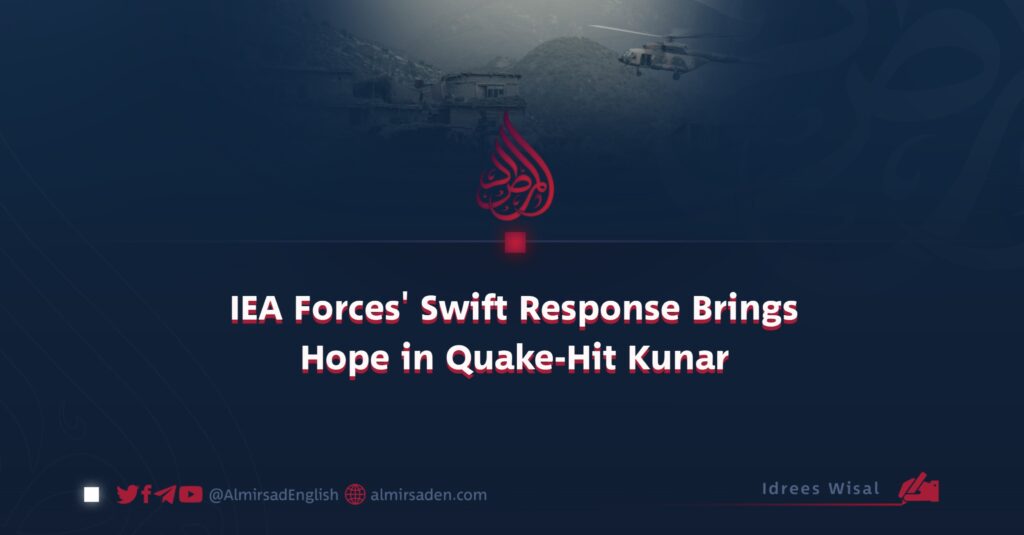Idrees Wisal
Late on Monday night, at precisely 11:47 p.m., when most families were deep in sleep, the earth suddenly trembled across several Afghan provinces, striking hardest in Kunar and Nangarhar. Within moments, homes lay in ruins, and the quiet of the night gave way to cries of anguish and the desperate pleas of the wounded. Fear spread like a shadow over the people, yet into this scene of terror came the forces of the IEA, arriving with the swiftness and determination of rescuers intent on saving lives.
The disaster cut off many mountain roads, as landslides made travel to remote areas almost impossible. Even so, relief efforts did not falter. Acting under the direct orders of the Minister of National Defense, military helicopters took to the skies within hours of the quake. They ferried the injured from Kunar to Nangarhar’s provincial hospital, while also carrying medicine, food, and other urgent supplies. In a single day, these aircraft completed more than eighty sorties, moving without pause between the disaster zone and relief centers.
On the ground, security forces worked relentlessly to free people trapped beneath the rubble. With little more than simple tools, and often only their bare hands, they dug through debris to reach survivors. The scenes recalled Afghanistan’s long tradition of sacrifice and solidarity in moments of crisis, when selflessness and courage rise above hardship. Side by side with the soldiers, local residents also labored to recover the dead and carry the wounded to safety.
The Ministry of Public Health swiftly dispatched teams of experienced doctors and volunteer nurses to the affected districts. Facing severe conditions and limited resources, they nonetheless managed to treat the injured and save many lives. Their rapid and coordinated intervention reflected the careful crisis planning that has become a hallmark of the IEA’s response to emergencies.
Almost immediately, the government announced emergency assistance amounting to 100 million Afghanis, about 1.3 million US dollars, and pledged that more support would follow if required. The measure was more than a display of responsibility; it was a message to the people that the IEA stands with them, even in their darkest hours.
This calamity, though deeply sorrowful, once again revealed the resilience of the Afghan nation and the patriotism of those who rushed to its aid. Where many countries stumble under the weight of logistics during such disasters, the IEA’s forces, drawing on the resources at hand, mounted an effective and timely response. Their actions not only preserved countless lives but also rekindled hope among families who had lost everything.
Earthquakes are natural tragedies beyond human control. What defines a nation is how it responds in the aftermath. Through its swift and organized relief, the IEA demonstrated that its role extends beyond security and governance to the very preservation of life and dignity. In this, a new chapter of national unity and public service has begun.
